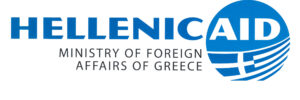The Sustainable Deve¬lop¬ment Goals (SDGs) have registered some progress since their adoption in 2015. Thanks to concerted efforts of many Governments and development partners, child mortality continues to fall. Hepatitis is on the retreat, while new chronic hepatitis B virus infections is nearly zero. Access to electricity has increased globally and the proportion of urban population living in slums is declining.
Notwithstanding this progress, gathering storms of weakening global economic growth, rising income inequality, unabated global warming and climate change, and escalating conflict are impeding SDG implementation. The tailwinds of rapid technological advances, on the other hand, offer best hope for accelerating SDG progress.
This overview focuses on these key challenges and the policy responses that can address them. It identifies the interlinkages among these challenges, un¬derscoring the imperative of addressing them in a concerted manner, rather than as free-standing issues that can be resolved sequentially and in isolation. The challenges highlighted here are, of course, not the only impediments to achievement of the SDGs; they also risk changing the overall context for sustainable development and, because they cut across all the SDGs and affect all countries, they can potentially undermine the overall implementation of the 2030 Agenda for Sustainable Development.
Against the backdrop of rising inequality and economic uncertainties, global growth will most likely average 3 per cent during the SDG period (2015–2030)—significantly below the global growth rate achieved during the Millennium Development Goals period. International trade, a long-time and proven engine of global growth, has slowed down since the global financial crisis in 2008. Global trade will continue to face downward pressure on multiple fronts.
On the one hand, trade tensions are likely to persist amid rising populism, perceived national security priorities and concerns related to intellectual property rights. On the other, rapid technological changes—such as automation that enables restoring of manufacturing; development of new materials and production technologies; and increased efficiency in resource usage, among others—are dramatically changing the volume, direction and the terms of trade. These changes are disrupting global value chains and export-led patterns of growth and development.
The Sustainable Development Outlook 2019: Gathering storms and silver linings offers a candid overview of these compounding and mutually reinforcing challenges.
More information: https://www.un.org/development/desa/dpad/wp-content/uploads/sites/45/publication/SDO2019_Book_Web.pdf
